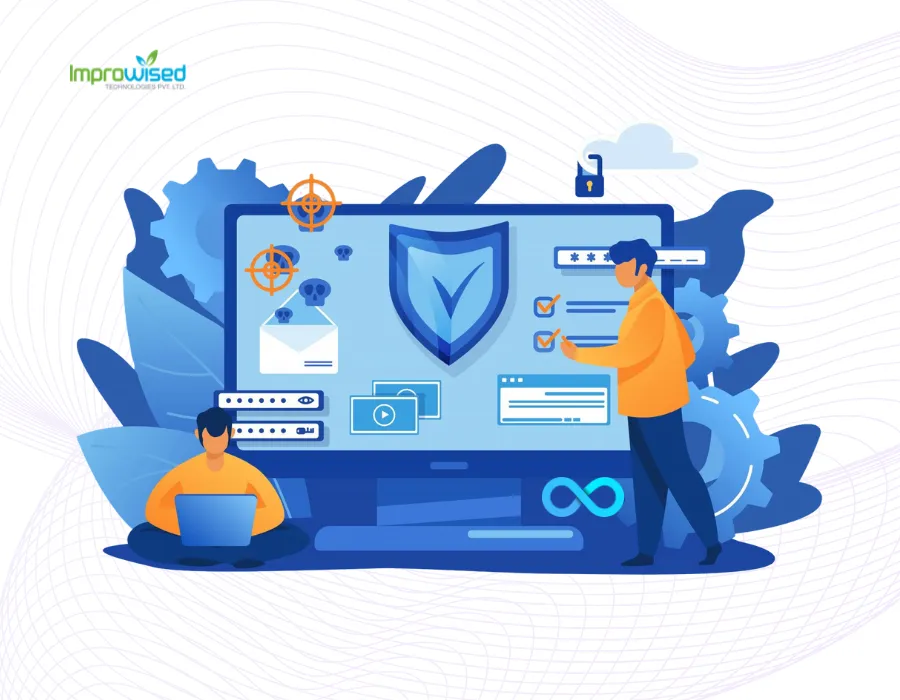September 26, 2025
Why 'Least Privilege' Shouldn't Just Be A Financial Security Approach – Protect Your Microservices Now

By Improwised Editorial Team
Improwised Technologies Pvt. Ltd.
The Principle of Least Privilege (PoLP) is a foundational principle of security architectures. The PoLP says that any given entity, whether it’s a user, process, or component of a system, should be granted only the minimal permissions necessary to carry out its required activities. First taken seriously in heavily regulated industries such as financial services and healthcare, PoLP is now a requirement in leveraging microservices, largely due to the distributed architecture and interdependent components in which they operate.
Microservices and the Increased Attack Surface
Microservices decompose monolithic applications into loosely coupled services that are each responsible for unique pieces of functionality and communicate through common API standards. Microservices mitigate many of the scalability and maintainability challenges that developers have grown to know, but they also create a new security challenge in the form of increasing the attack surface.
Microservices operate independently of one another - often running in different containers or orchestrated environments, as with Kubernetes. They are also self-authenticating with APIs, accessing databases, communicating with other external processes and systems, etc. If a single microservice is overprivileged, that microservice becomes a lucrative target for lateral movement, opening up a new ‘value chain’ in access escalation.
Enforcing Least Privilege in Microservices
-
Granular Role-Based Access Control (RBAC) and Attribute-Based Access Control (ABAC)
Role-Based Access Control (RBAC) utilizes predefined roles to assign permissions, whereas Attribute-Based Access Control (ABAC) assigns permissions based on dynamic values, such as an IP address, request context, characteristics of the user device, etc. If you apply RBAC and ABAC at the service level, you should be able to mitigate risk and ensure that each microservice only accesses what it absolutely needs. For instance, a payment processing service shouldn’t have direct access to user authentication services.
-
Scoped API Tokens and Fine-Grained Authentication
API gateways should also consider the scope of tokens. OAuth 2.0 and OpenID Connect include fine-grained access control mechanisms that allow you to control scopes to ensure that an access token only has the necessary permissions to meet the client’s needs. A common use case is the inclusion of JSON Web Tokens (JWTs), so you do not need to provide one service with access to every endpoint in your API, but can have claims that merely allow access based on who is requesting.
-
Service-to-Service Authentication with Mutual TLS
Mutual TLS (mTLS) provides a procedure for authenticating both the client and the server. Establishing a connection with service identity has a direct solution with mTLS, when two services are communicating with each other, without an associated authentication process. It is best to enforce mTLS at the service mesh layer, using tools such as Istio or Linkerd, so that whatever inter-service communication takes place is duly captured.
-
Least Privilege at the Data Layer
In relation to databases, we can layer other ideas of least privilege using row-level security and the use of role-based query execution against a user’s request. It is also important to clearly state read, write, and execute privileges, as they apply, for each microservice. Microservices should never be directly connected to databases, nor allow service engineers be allowed to communicate directly with databases; all should go through some APIs that provide defined grants and authorizations when applicable.
-
Kubernetes Policies related to Least Privilege
Kubernetes provides several different methods and configuration options to enforce PoLP:
- Network Policies: You can limit policies so that services only communicate with each other, while specifying which pods can communicate.
- Pod Security Standards: You can prevent the use of privileged containers running as root.
- Kubernetes RBAC: You can enforce the lowest level of access to cluster-wide resources, with minimal access being enforced per pod, controller, and namespace.
Automate the Implementation of Least Privilege
-
Control Policies based on Policy as Code (PaC)
Using a Policy as Code (PaC) approach enables administrators to write policies based on least privilege as code. With tools such as Open Policy Agent (OPA), security controls can be enforced government-wide across your microservices. Policies are evaluated at runtime to ensure unauthorized requests are denied (as opposed to just logging the request for audit) before they are executed.
-
Infrastructure as Code (IaC) Security Validation
Terraform, CloudFormation, and Kubernetes manifests should include security guardrails to ensure that overly privileged services cannot be deployed. Automated security scanning tools, for example, Checkov or tfsec, facilitate the enforcement of least privilege at the point of deployment.
-
Continuous Monitoring and Anomaly Detection
Observability tools, including Prometheus, Grafana, and OpenTelemetry, can observe access patterns. Unusual service-to-service requests, excessive API requests, or direct access attempts should produce alerts. Security information and event management (SIEM) tools can aggregate logs to allow for enrichment of reporting and threat analysis.
Cost of Not Enforcing Least Privilege
Neglecting to enforce least privilege in microservices means cascading failure of many security objectives:
- Lateral Movement: If a service is compromised and that service has more privileges than it should, attackers can take advantage of the granted access to propagate their access to other services in the environment. A misconfigured exposed API can lead to unauthorized database access for data exfiltration or destruction.
- Privilege Escalation: Uncontrolled permissions on service accounts or IAM roles can lead to escalation attacks. Once a misconfigured identity is exploited, one can gain control over other components of the infrastructure by abusing the permissions that can normally be controlled.
- Regulation Violations: Concepts such as least privilege are mandated by many regulations, including GDPR, HIPAA, PCI-DDS, etc. Non-compliance can result in punitive financial penalties and reputation risk.
- Supply Chain Attacks: Over-privileged third-party integrations are especially dangerous. A vulnerability in a third-party dependency can affect an entire microservices space and ecosystem.
- Data Breach: Your exposure when breached is directly proportional to how much access was available. Suppose a database was over-privileged, and the attacker had access to it. In that case, your data is at steady risk, and the potential risk of financial losses, lawsuits, or loss of trust from your customers becomes apparent.
Conclusion
Enforcement of least privilege for microservices is not an optional component of your security stack but essential to the architecture. The attackers on your microservice-based architectures will evolve as the architectures evolve. Organizations must adopt least privilege across the ecosystem, from authentication patterns to deployed runtime, and every individual microservice should not have any more access than it needs.
Strengthen your microservices security with a least-privilege strategy-learn how our team can help here

November 19, 2025
Unlocking Developer Potential: How Platform Engineering Transforms Developer Experience

By Shyam Kapdi
Improwised Technologies
Pvt. Ltd.


By Shyam Kapdi
Improwised Technologies
Pvt. Ltd.

November 14, 2025
How to Build a High-Impact Internal Developer Platform: Step-by-Step Blueprint, Tools, and Best Practices

By Shyam Kapdi
Improwised Technologies
Pvt. Ltd.
Optimize Your Cloud. Cut Costs. Accelerate Performance.
Struggling with slow deployments and rising cloud costs?
Our tailored platform engineering solutions enhance efficiency, boost speed, and reduce expenses.
